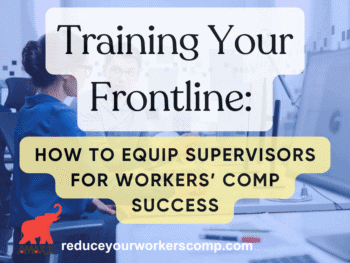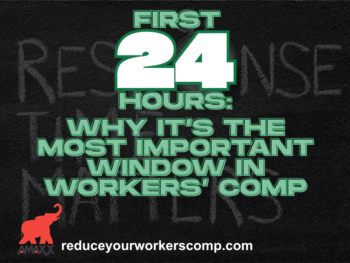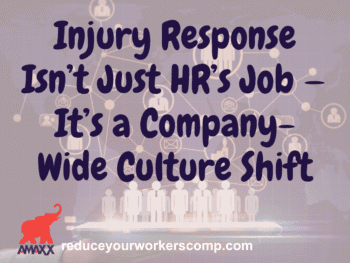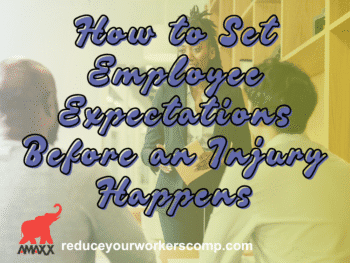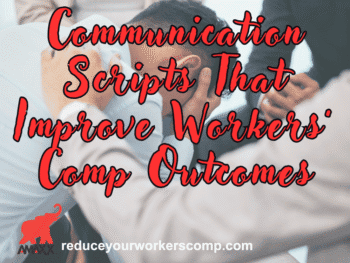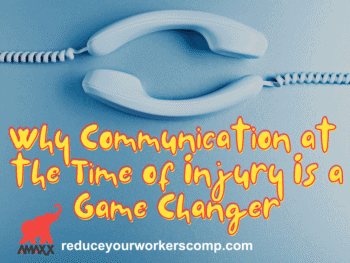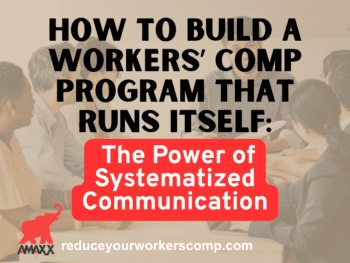In workers’ compensation claims, the employer and employee are supposed to play the role of “opposing parties” with a script (written by attorneys for both sides) calling for no communication, no cooperation and a maximum of hearings, trials, testimony and appeals – all expensive and time consuming (and unnecessary) at best and, in too many cases, permanently destructive of a worker, a worker’s family and a workplace. Even though this example is specific to NY it will have a positive impact in any state.
Why should it be this way? The law, as originally constructed, anticipated few hearings and fewer trials and appeals. The present system grew by unwritten tradition and flowed toward maximum financial rewards for lawyers and carriers, with little regard for the employee and employer. Begun many decades ago, blame serves little purpose now.
A call for reform or a new way of doing business for the workers’ compensation board (WCB) is not likely to produce results any time soon. However, reform “one workplace at a time” is eminently doable. The reasons are:
1. Most positive outcomes are achieved by the employer’s efforts BETWEEN hearings (not by a lawyer’s arguments AT hearings),
2. Efforts off the calendar produce results little noticed by the WCB and, therefore, are not subject to the arbitrary swarm of rulings produced by hearings and appeals.
The Board, in fact, is overwhelmed by the sheer volume of hearings and expresses little objection to parties achieving amicable results on their own.
How can this be accomplished? Only by direct action and communication between the employer and employee and not waiting for a judge to make a ruling. One employer, implementing these procedures, reported an 85% decline in hearings.
The key features are:
- Investigate thoroughly. Attach all useful documents to the C-2 Employer’s Report of Injury.
2. Send the employeea copy of the C-2 and attached documents. Ask the employee to provide the employer with a copy of the employees claim form (C-3). (These are not automatically exchanged in New York and result in many needless controversies.)
3. Take the employee to the hospital or first provider at the time of the injury. Tell the facility that the bills will be paid by the comp carrier or group medical plan, if necessary. NEVER let an employee wonder if they will have to pay.
4. Insist the carrier consult you BEFORE contesting any claim. Object if you feel a contest is unwarranted. Do so in writing and request a written answer.
5. Attend all hearings where you believe benefits are being delayed or denied without good reason.
6. Insist, in writing, the attorney representing the carrier call the employer BEFORE and AFTER each hearing and that they furnish a copy of the hearing report to the employer. (The attorneys selected by the carrier actually are the attorneys for the employer and owe their primary duty to the employer. They MUST advise the employer of any possible conflict between the carrier and employer and can be disciplined of any breach.)
7. Remain in constant communication with the employee. Make sure the finances of the family are not being harmed by poor handling of the claim. Be your employee’s advocate in communications with the carrier, if need be. (workersxzcompxzkit)
Many employers do these things as a matter of course. They are little noticed by the workers’ comp system since they, and their claims, have little presence at the WCB. Remember: One employer, implementing these procedures, reported an 85% decline in hearings.
Author: Attorney Theodore Ronca is a practicing lawyer from Aquebogue, NY. He is a frequent writer and speaker, and has represented employers in the areas of workers’ compensation, Social Security disability, employee disability plans and subrogation for over 30 years. Attorney Ronca can be reached at 631-722-2100.
WC Calculator: www.reduceyourworkerscomp.com/calculator.php
WC 101: www.ReduceYourWorkersComp.com/workers_comp.php
Follow Us On Twitter: www.twitter.com/WorkersCompKit
Do not use this information without independent verification.
All state laws vary.
©2008 Amaxx Risk Solutions, Inc. All rights reserved under International Copyright Law. If you would like permission to reprint this material, contact Info@WorkersCompKit.com





